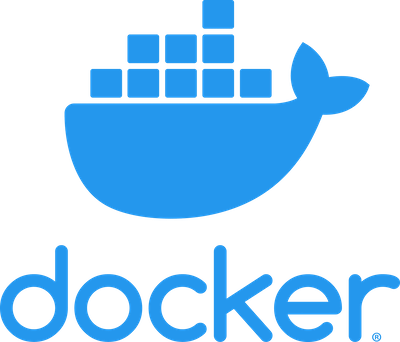
The deployment architecture follows a structured pipeline to ensure efficiency and scalability. It begins with data processing, where Extract, Transform, Load (ETL) pipelines clean and prepare data for training. During model training, MLflow tracks experiments and manages versioning within Amazon SageMaker. Once a model is trained, the model packaging phase involves containerizing it using Docker to ensure portability and consistency across environments. After model deployment, Amazon SageMaker serves the containerized model as an endpoint, enabling real-time or batch inference. Finally, rigorous monitoring and maintenance are handled through continuous tracking with CloudWatch and MLflow, ensuring long-term model performance, security, and compliance.
A Balanced Perspective on ML Deployment with Amazon SageMaker
As consultants, our goal is to provide our clients with a comprehensive analysis of ML deployment options, confirming they have a clear understanding of both the advantages and potential challenges of ML deployment. Amazon SageMaker, along with MLflow and Docker, offers a robust framework for deploying ML models efficiently and securely. However, like any technology, it involves trade-offs that require careful consideration.
In this analysis, we will explore the key benefits of deploying ML models using Amazon SageMaker, such as scalability, security, and cost efficiency, while also addressing potential downsides such as vendor lock-in, complexity, and computational demand. By understanding both the strengths and limitations, organizations can make informed decisions and implement strategies to mitigate significant challenges, ensuring a smooth and effective ML deployment.
| Pros | Cons |
|---|---|
| Scalability: Amazon SageMaker’s managed service auto-scales model deployments based on demand. | Vendor Lock-in: Containerization improves portability, but tight integration with Amazon Web Services (AWS) services may require rework when migration to other cloud platforms. |
| Security: Built-in encryption and Identity and Access Management (IAM) integration ensure compliance with federal regulations. | Complexity: Integrating SageMaker, MLflow, and Docker requires expertise in MLOps. |
| Reproducibility: MLflow’s experiment tracking ensures consistent model training and deployment. | Computational Demand: Deploying containerized models on SageMaker endpoints may require careful resource management to optimize cost-effectiveness for large-scale applications. |
| Portability: Docker enables seamless model transfers across environments. | Learning Curve: Teams unfamiliar with these tools may require additional training to implement them effectively. |
| Cost Efficiency: Amazon SageMaker’s pay-as-you-go pricing reduces unnecessary costs. |
The Challenges of Model Deployment in the Public Sector
Public sector organizations often deal with vast amounts of sensitive data and require robust deployment strategies that comply with regulatory standards. Common challenges include:
- Scalability: Model inference, the process of using a trained model to make predictions on unseen data, must efficiently handle large and variable input volumes while adapting to sudden surges in data flow and computational demand. Whether operating on the frontend or backend, the inference pipeline should dynamically process input data and scale resources as needed.
- Traceability and Versioning: Maintaining comprehensive records of model versions and their evolution are essential for ensuring transparency, reproducibility, and regulatory compliance.
- Security and Compliance: AI/ML deployments shall comply with National Institute of Standards and Technology (NIST) 800-53 to align with Federal Information Security Modernization Act (FISMA) and Federal Risk and Authorization Management Program (FedRAMP) standards, guaranteeing robust security controls, risk management, and regulatory adherence. Deployments must enforce federal security policies to protect sensitive data, implement access controls, monitor system activity, and mitigate risks such as adversarial attacks and data breaches.
- Operational Efficiency: Reducing deployment friction to enable faster decision-making.
To tackle these challenges, we recommended Amazon SageMaker, MLflow, and Docker into the deployment pipeline.
Amazon SageMaker: A scalable and secure ML deployment platform
Amazon SageMaker is fully supported in AWS GovCloud (US) which is FedRAMP-compliant. It offers a fully managed service for training and deploying ML models. For public sector projects, Amazon SageMaker is an ideal choice because it offers multiple essential features.
- Built-in Scalability: Easily deploy models to handle high-volume inference requests.
- Security and Compliance: Integrated with AWS IAM, Virtual Private Cloud (VPC), and encryption mechanisms.
- Cost Efficiency: Supports model hosting with auto-scaling.
By leveraging Amazon SageMaker, we deployed an ML model for detecting financial anomalies in federal transactions. The key steps of this process were:
- Model Training: Our data scientists developed machine learning such as natural language processing, Large Language Models, XGBoost for classification. They leveraged traditional time-series methods such as Autoregressive Integrated Moving Average (ARIMA) and Exponential Smoothing for baseline comparisons and hybrid modeling approaches. Additionally, they implemented advanced parsing techniques, such as tokenization for text preprocessing in natural language processing (NLP) tasks and feature extraction for structured data models. The team fine-tuned hyper-parameters to optimize model accuracy and ensure robust generalization to real-world scenarios.
- Model Containerization: The trained model was encapsulated as an containerized application, establishing seamless portability, version control, and reproducibility. This approach allowed for efficient deployment, integration with existing cloud infrastructure, and compliance with security best practices. The model artifacts, dependencies, and runtime environment were bundled to support scalable and flexible deployment options.
- Model Deployment: The containerized model was deployed using Amazon SageMaker endpoints to serve real-time predictions with low latency and high availability. Amazon SageMaker’s fully managed services enabled automatic scaling to handle variable workloads, facilitating efficient resource utilization while maintaining compliance with federal security and regulatory standards. Monitoring and logging mechanisms were also integrated to track model performance, detect anomalies, and enable continuous improvement.
MLflow: Tracking, Managing, and Automating ML Models
MLflow is an open-source platform that streamline
How we use MLflow:
- Experiment Tracking: Recorded training runs, hyperparameters, and performance metrics, ensuring full traceability for auditing purposes.
- Model Registry: Maintained an organized catalog of model versions, enabling easy retrieval and validation to meet FISMA’s requirements for configuration management and documentation.
- Deployment Automation: Integrated MLflow’s model serving with Amazon SageMaker, facilitating compliant and automated model deployment that supports monitoring, logging, and secure data handling, in line with NIST’s security controls.
By using MLflow, we ensured that each model version was traceable, auditable, and aligned with federal compliance requirements. This approach reinforced the integrity, security, and accountability necessary for public sector applications, meeting critical NIST, FISMA, and FedRAMP standards.
Docker: Containerizing ML Models for Portability and Reproducibility
Docker s
- Built a Docker Image: Packaged the trained model, dependencies, and MLflow server.
- Pushed to Amazon Elastic Container Registry (ECR): Enabled seamless deployment on Amazon SageMaker.
- Deployed via Amazon SageMaker Inference: Used the containerized model to serve predictions securely.
For managing a single Docker container per model, AWS services like Elastic Container Service (ECS) or Fargate provide a simple and effective solution, handling container orchestration and scaling with minimal overhead. However, as the model portfolio grows or requires advanced orchestration, using Kubernetes (via Amazon EKS) alongside AWS can offer more control over container management. Kubernetes enables fine-grained control over scaling, load balancing, and monitoring across multiple containers. By combining AWS infrastructure with Kubernetes, we can leverage the scalability and flexibility of Kubernetes for complex workflows while benefiting from AWS’s security, scalability, and managed services. This hybrid approach ensures we can efficiently manage multiple models while maintaining consistency, security, and operational efficiency.
Impact on Public Sector Efficiency
By leveraging Amazon SageMaker, MLflow, and Docker, we achieve multiple benefits.
- Faster Deployment Cycles: Reduced model deployment time from weeks to days.
- Enhanced Scalability: SageMaker auto-scaling handled varying workloads.
- Regulatory Compliance: MLflow’s tracking ensured transparency for audits.
- Seamless Updates: Docker containers facilitated quick model version updates
Conclusion
For public sector ML deployments, combining Amazon SageMaker, MLflow, and Docker provides a robust, scalable, and compliant solution. These technologies streamline workflows, enhance efficiency, and ensure models are production-ready with minimal overhead. With the increasing adoption of AI in government agencies, utilizing these tools will be essential for fostering innovation while upholding security and compliance standards.
 Pinkaew Choengtawee | 5/12/2025
Pinkaew Choengtawee | 5/12/2025
